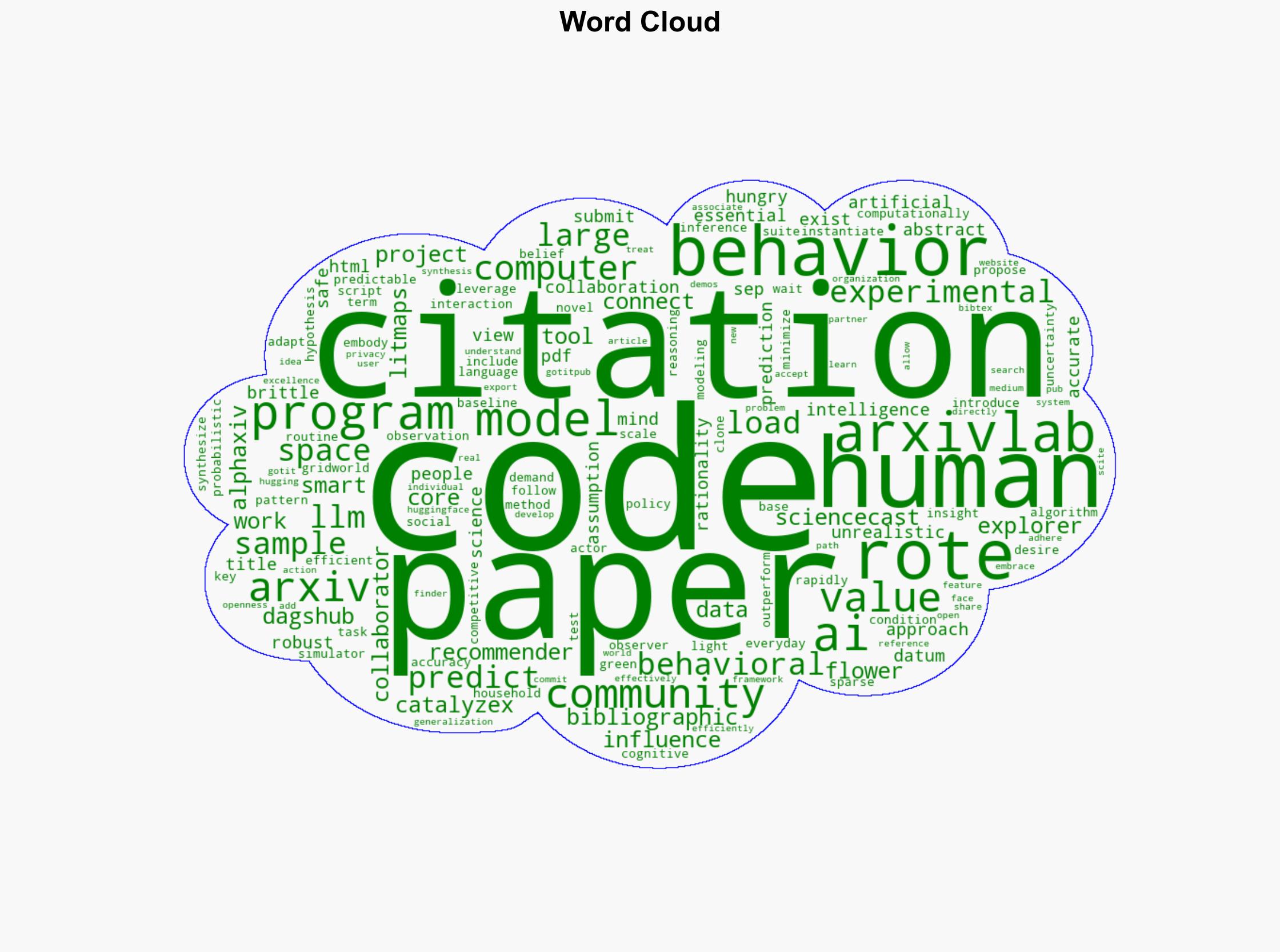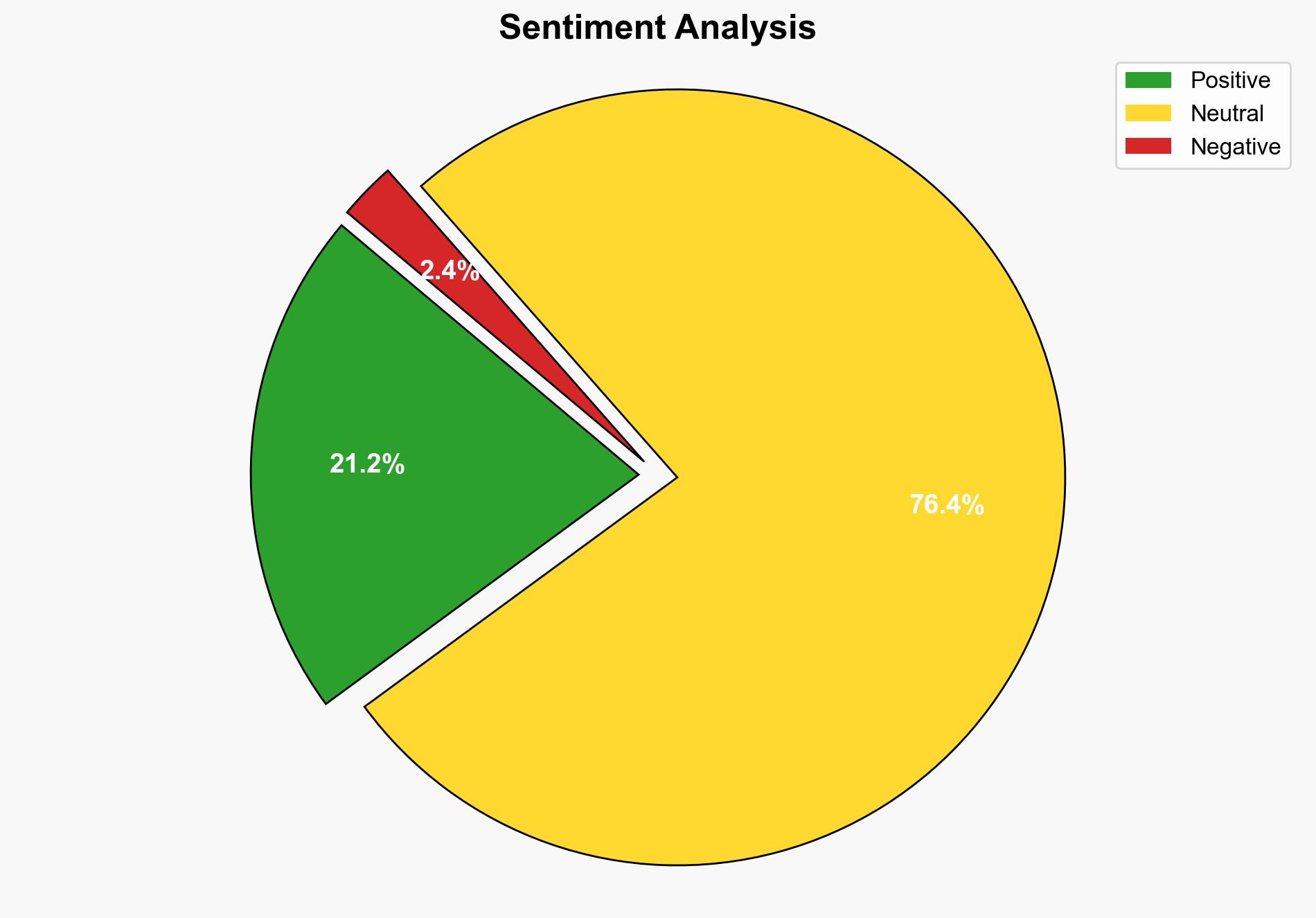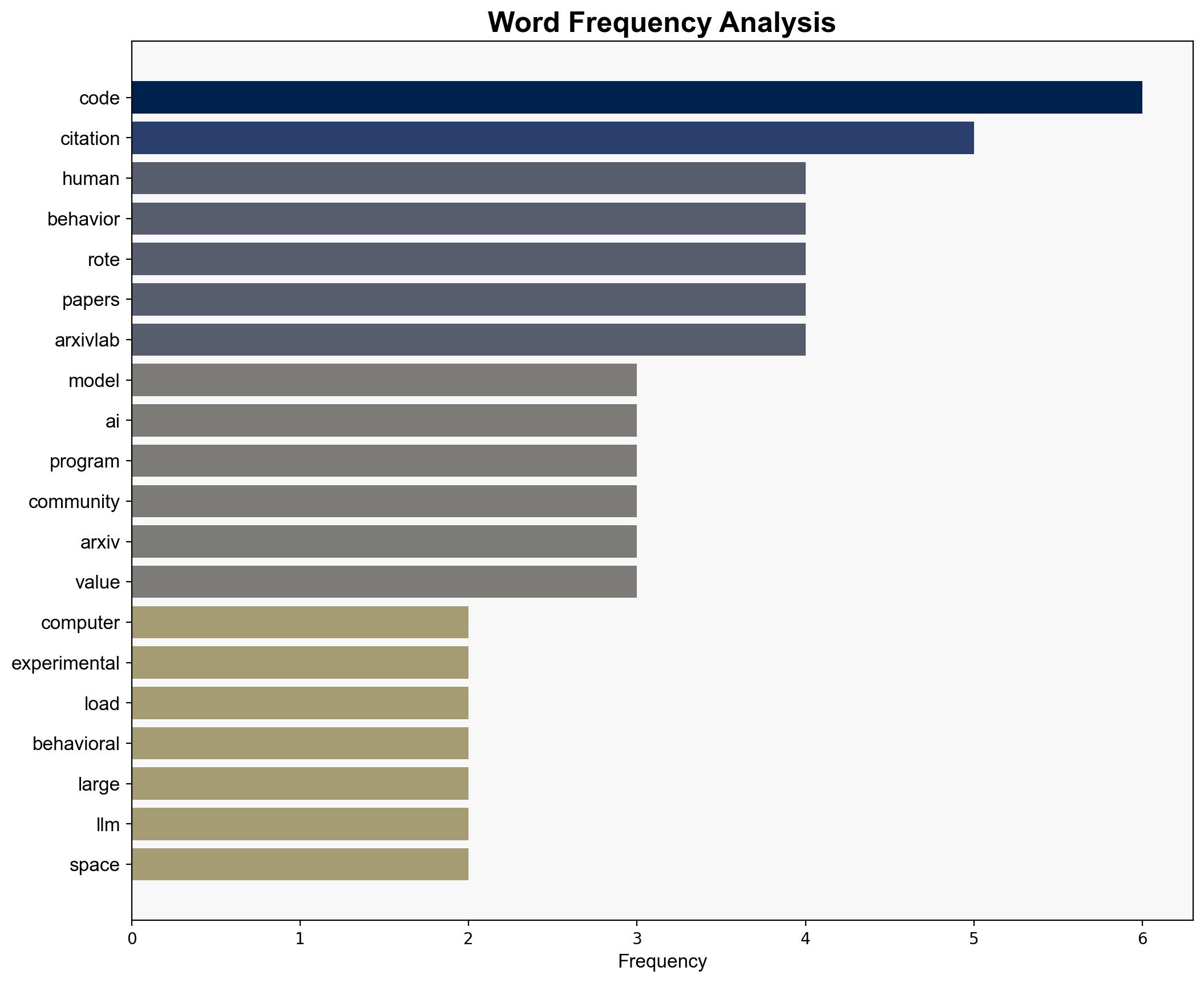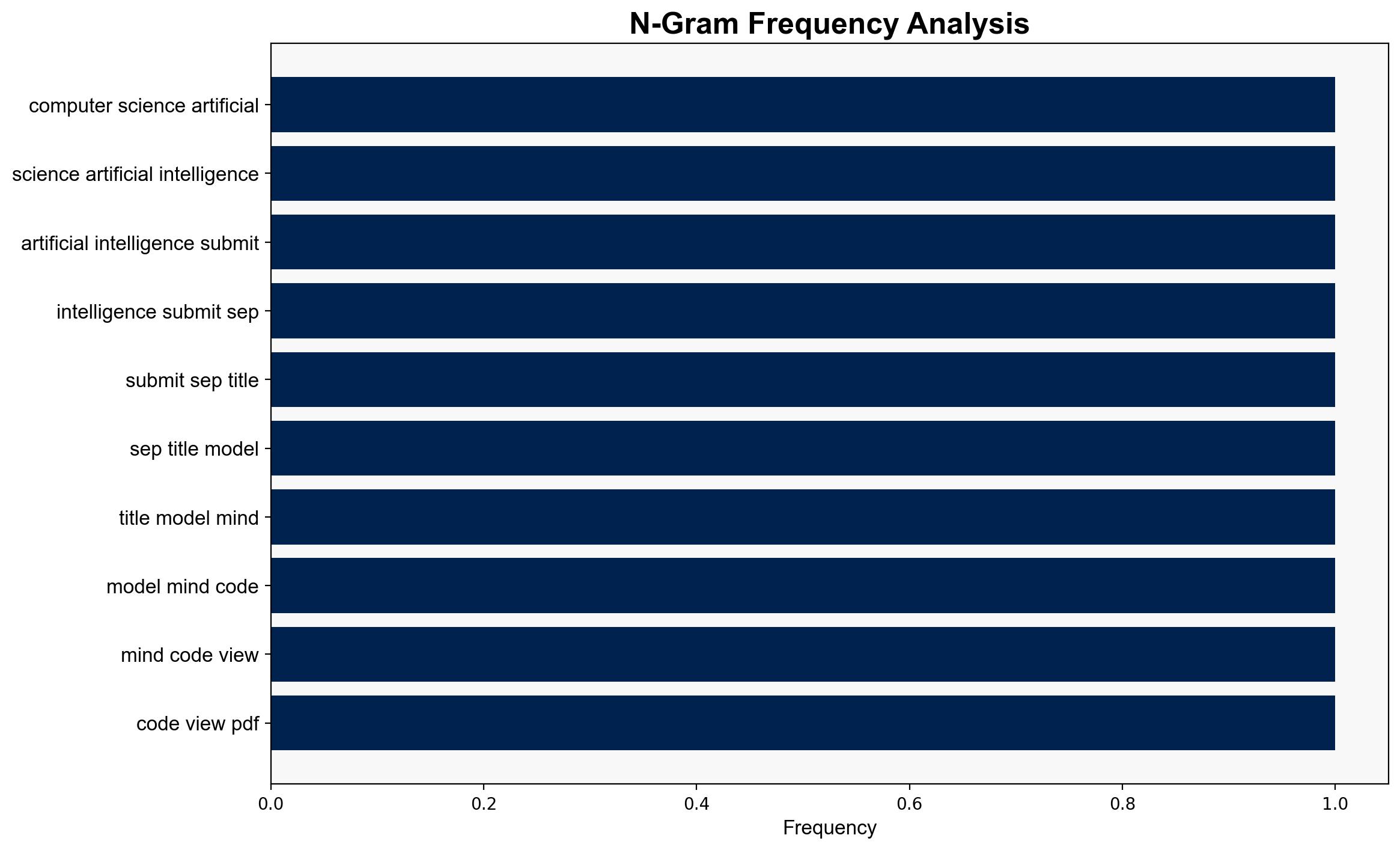Modeling Others’ Minds as Code – Arxiv.org
Published on: 2025-10-20
Intelligence Report: Modeling Others’ Minds as Code – Arxiv.org
1. BLUF (Bottom Line Up Front)
The most supported hypothesis suggests that the proposed method of modeling human behavior as computer code offers a novel and potentially more efficient approach to predicting human actions in AI systems. This could enhance human-AI collaboration by improving the accuracy and adaptability of AI responses. Confidence in this hypothesis is moderate, given the early stage of research and limited real-world testing. Recommended action includes further exploration and testing of this method in diverse environments to validate its efficacy and scalability.
2. Competing Hypotheses
Hypothesis 1: The approach of modeling human behavior as code will significantly improve AI’s ability to predict and interact with human actions, leading to more robust and safe human-AI collaboration.
Hypothesis 2: The approach is overly reliant on assumptions of predictable human behavior and may not significantly outperform existing methods in complex, real-world scenarios.
3. Key Assumptions and Red Flags
Assumptions:
– Human behavior follows predictable patterns that can be effectively modeled as code.
– Large language models can accurately synthesize behavioral programs.
– The method can generalize from sparse observations to real-world applications.
Red Flags:
– Over-reliance on computational models may overlook nuanced human behaviors.
– Limited testing in controlled environments may not translate to real-world efficacy.
– Potential bias in training data could skew model predictions.
4. Implications and Strategic Risks
If successful, this approach could revolutionize AI-human interaction by making AI systems more intuitive and responsive. However, failure to account for unpredictable human behaviors could lead to significant errors in AI decision-making, posing risks in critical applications such as autonomous vehicles or healthcare. Economically, successful implementation could reduce costs and increase efficiency in industries relying on AI. Geopolitically, nations advancing this technology could gain strategic advantages in AI capabilities.
5. Recommendations and Outlook
- Conduct extensive real-world testing across diverse scenarios to validate the approach.
- Develop safeguards to mitigate potential biases and errors in AI predictions.
- Scenario Projections:
- Best Case: The approach significantly enhances AI capabilities, leading to widespread adoption and improved safety in human-AI interactions.
- Worst Case: The method fails to generalize, leading to costly missteps in critical applications.
- Most Likely: Incremental improvements in AI prediction accuracy, with gradual adoption as more data becomes available.
6. Key Individuals and Entities
No specific individuals are mentioned in the source text. The entities involved include research groups and organizations contributing to AI development and the Arxiv.org platform for disseminating research.
7. Thematic Tags
artificial intelligence, human behavior modeling, AI safety, computational modeling, machine learning, predictive analytics





